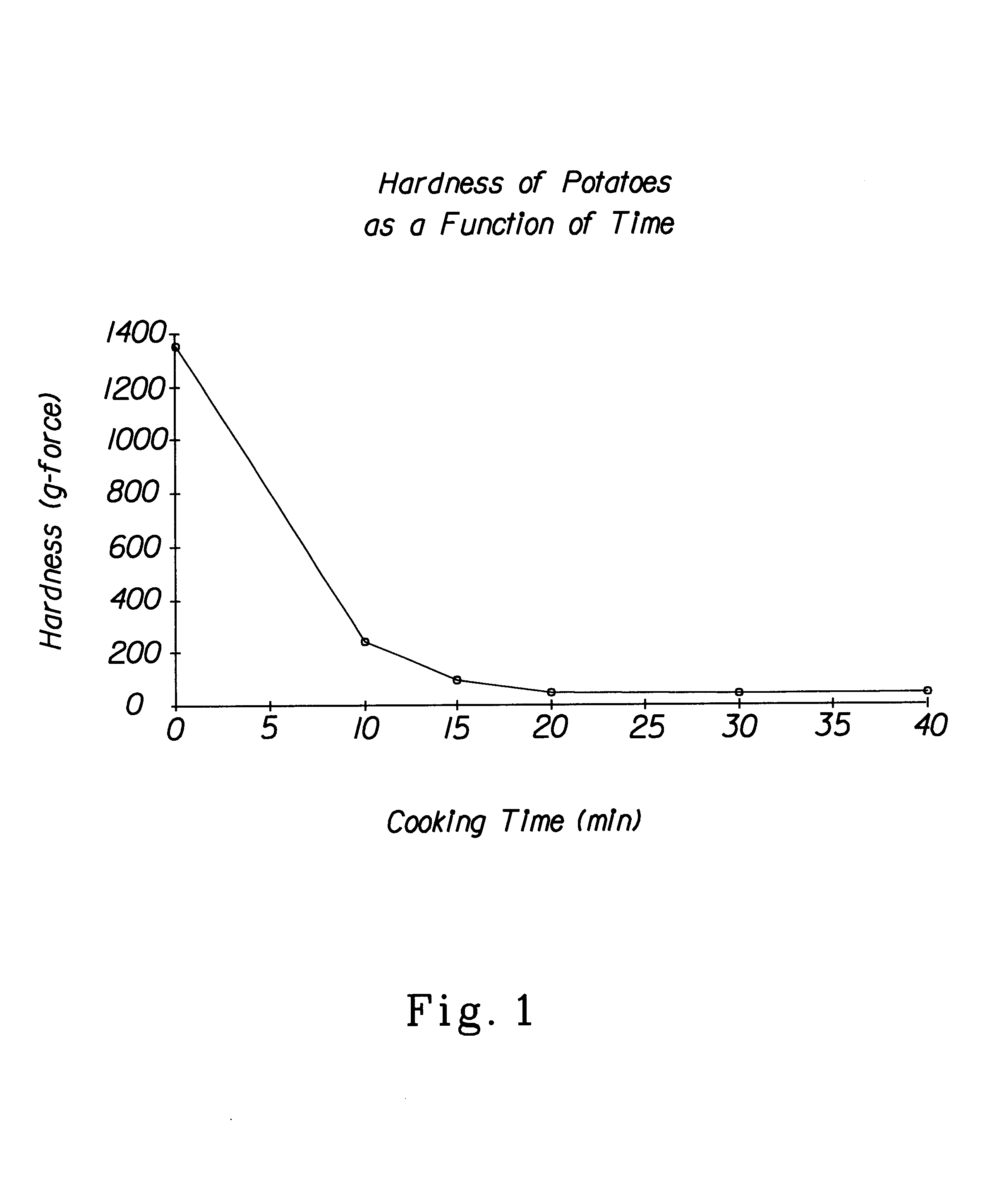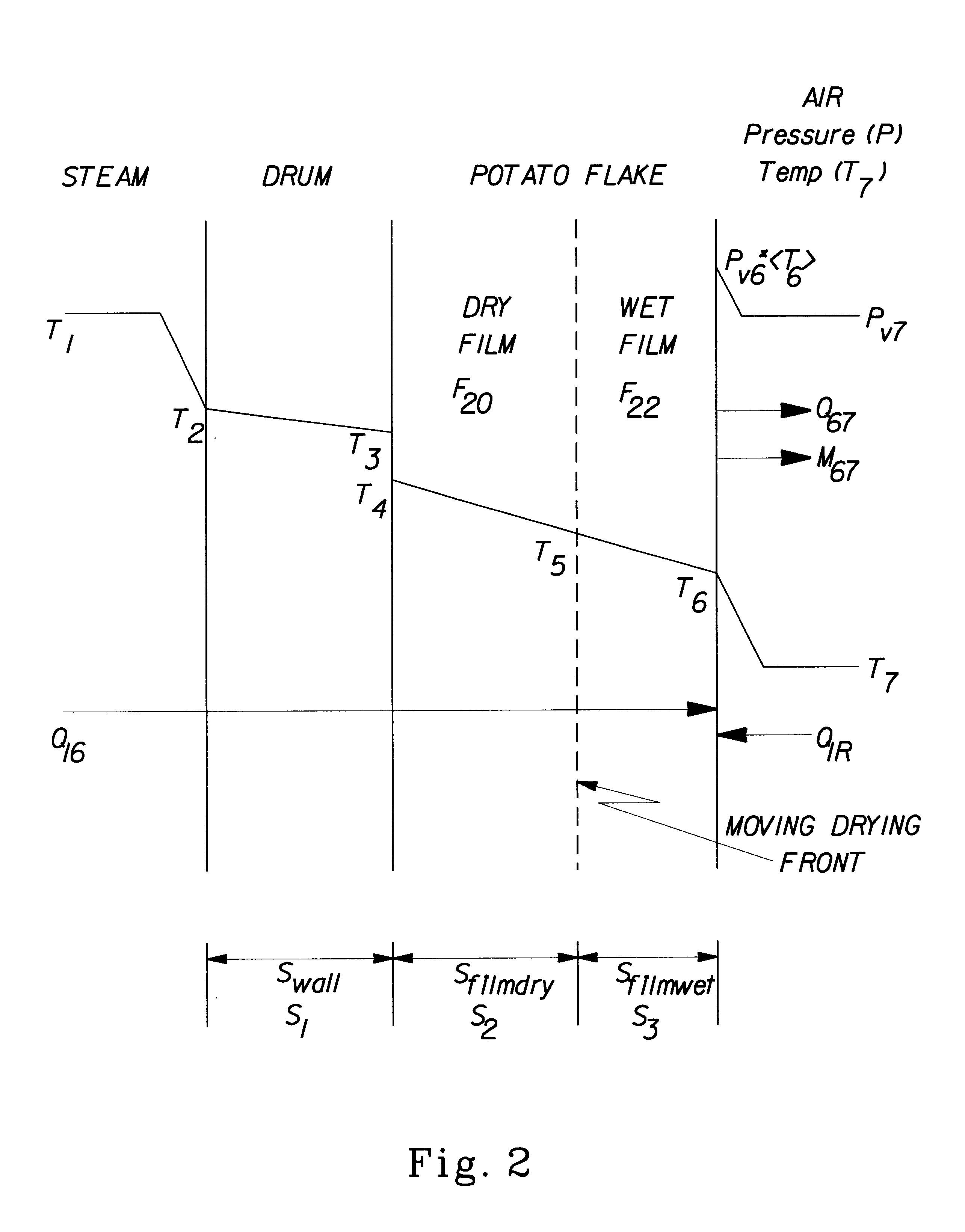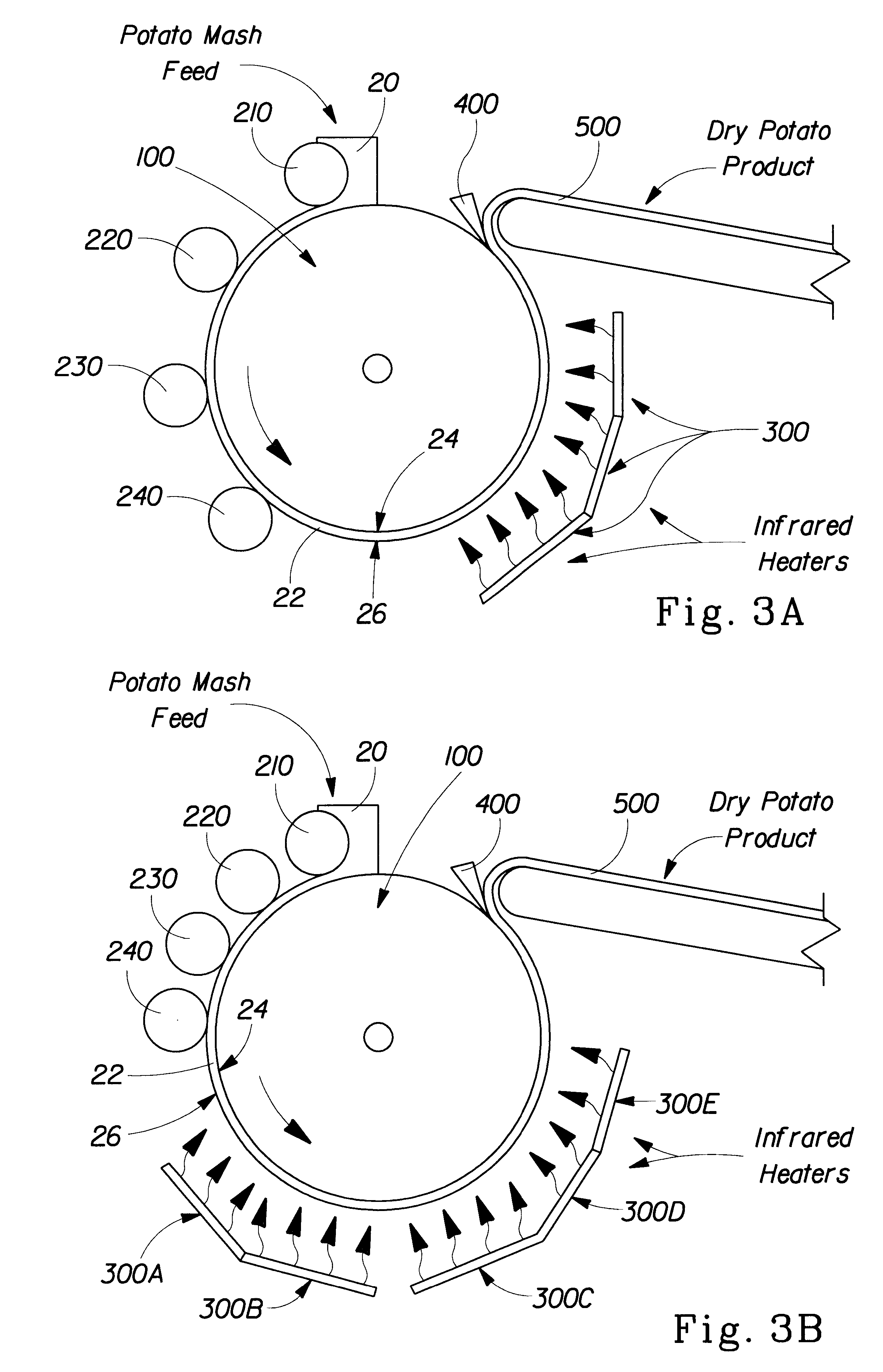Method for preparing dehydrated starch products
- Summary
- Abstract
- Description
- Claims
- Application Information
AI Technical Summary
Benefits of technology
Problems solved by technology
Method used
Image
Examples
example 1
[0424]Raw Russet Burbank potatoes having a solids level of 21% and a specific gravity of 1.072 are washed in room temperature water (˜90 kg water to ˜4 kg potatoes) to remove dirt and any foreign materials, steam peeled at 5.6-6.0 kg / cm2 pressure for 23 seconds (50% full peeling time) at 11.25-12.0 sec / rev rotation speed, scrubbed with a Hobart® Abrasive Peeler with ribbed rubber surface for 30 seconds and cut in to ¼″ thick slices using Lan Elec® slicer. The potato slices are then subjected to a cooking step. The cooking is conducted using Ball Canning Table and Reimers Electric steam boiler with 207° F. steam for 15 minutes at a pressure of 20 psig. The potato slices are then shredded using Hobart® meat grinder with ⅜″ opening die plate and mashed using Hobart® mixer with paddle for 1 minute to produce a potato mash. Ten grams of monoglyceride (Diamodan PVK, Danisco Co.), previously dispersed in water is added to the mash and mixed for one minute in the Hobart® mixer. One hundred ...
example 2
[0425]Whole, raw Russet Burbank potatoes having a solids level of 21% are washed with room temperature water to remove dirt and any foreign materials. The potatoes are then boiled in water for 25 minutes. The potatoes are then shredded using Hobart® meat grinder with ⅜″ opening die plate and mashed using Hobart® mixer with paddle for 1 minute to produce a potato mash. Ten grams of monoglyceride (Dimodan PVK, Danisco Co.), previously dispersed in water is added to the mash and mixed for one minute in the Hobart® mixer. The mash is applied to the four applicator rolls of an Overton® single drum dryer. The drum is maintained at 85 psi steam pressure (a temperature of 328° F.) and is rotated at a speed of about 20 sec / rev (3.0 rpm). The drum has a diameter of 12 inches and is inches long. Infrared heat is applied to the outer surface of the drum using a infrared radiant heater, Model 1010, manufactured by RAYMAX, St. Louis, Mo. The heaters are 22 inches long and 4 inches wide. The heate...
example 3
[0426]A 50:50 mixture of whole raw Russet Burbank potatoes and Bintje potatoes having a solids level of 20.5% are washed, rinsed and brushed with water. The whole potatoes are cooked with steam (psi) for about 22 minutes. The potatoes are then mashed to produce a potato mash. Wheat starch is added to the potato mash at a 6.3% level (dry basis) after the cooker and mixed during the conveying of the mash to the drum dryer. The mash comprising the starch is applied to the top of three drying drums (#4, #5 and #6). No infrared heaters are employed. The drums pressures, temperatures and speed are listed in the table below. The drums have a diameter of 5 feet and a length of 16 feet. A thin layer of mash is formed on the drying drums. The sheet having a moisture content of 5.98% is removed from the drum by a doctor knife, combined at a flaker for sorting and milling to a particle size of 30% maximum through a 40 US mesh. The resulting co-flaked product comprise about 26.9% amylose, about ...
PUM
 Login to View More
Login to View More Abstract
Description
Claims
Application Information
 Login to View More
Login to View More - R&D
- Intellectual Property
- Life Sciences
- Materials
- Tech Scout
- Unparalleled Data Quality
- Higher Quality Content
- 60% Fewer Hallucinations
Browse by: Latest US Patents, China's latest patents, Technical Efficacy Thesaurus, Application Domain, Technology Topic, Popular Technical Reports.
© 2025 PatSnap. All rights reserved.Legal|Privacy policy|Modern Slavery Act Transparency Statement|Sitemap|About US| Contact US: help@patsnap.com



